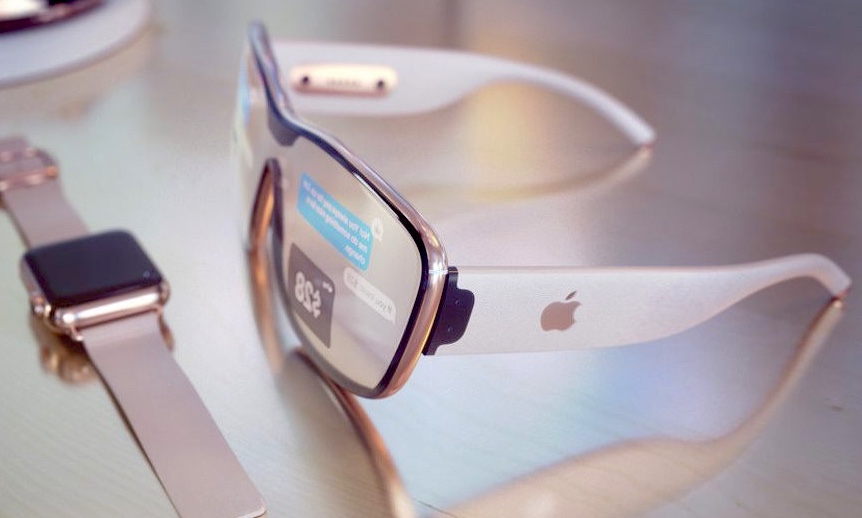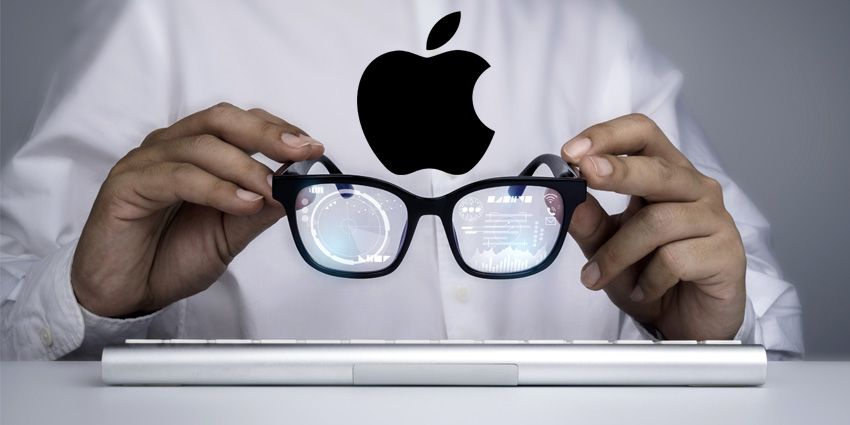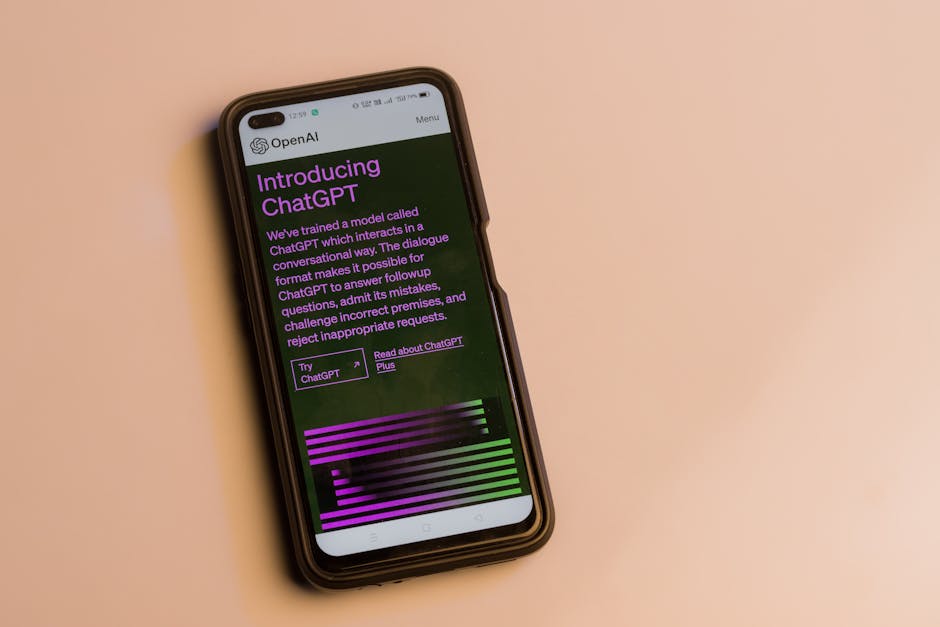The Dawn of a New Computing Era: Is the iPhone’s Reign Coming to an End?
For over fifteen years, the iPhone has been the undisputed center of the digital universe. It redefined communication, photography, and personal computing, creating an entire economy of apps and accessories in its wake. Every piece of iPhone news, from minor software tweaks to major hardware redesigns, has been scrutinized as a bellwether for the future of technology. But as the smartphone market reaches peak maturity, Apple is already laying the groundwork for its next monumental act. The launch of the Apple Vision Pro wasn’t just about a new product; it was a declaration of intent. The latest Apple Vision Pro news and strategic whispers from Cupertino, however, suggest that this $3,500 “spatial computer” is not the final destination. Instead, it’s the foundational research and development for a far more ambitious goal: a pair of lightweight, all-day smart glasses that could one day replace the iPhone entirely.
This article delves into the strategic pivot from the niche, high-powered Vision Pro to a more accessible and mainstream smart glasses project. We will analyze the immense technical challenges, explore how this new device will integrate into the sprawling Apple ecosystem news, and discuss the profound implications for user interaction, privacy, and the very concept of personal technology. This isn’t just about a new gadget; it’s about the beginning of a multi-decade transition to the next computing paradigm.
From Spatial Computing Pioneer to Mainstream Wearable: Apple’s AR Strategy Evolves
Apple’s approach to new product categories is methodical and deliberate. They rarely invent a category, but they almost always define it. From the iPod to the iPhone and the Apple Watch, the strategy has been consistent: wait, learn from the market’s pioneers, and then release a product that excels in user experience, design, and ecosystem integration. The journey into augmented reality (AR) appears to be following a similar, albeit more complex, playbook.
The Apple Vision Pro: A Foundation, Not a Destination
The Apple Vision Pro is an engineering marvel, a device packed with technology that pushes the boundaries of what’s possible in a consumer headset. Its dual 4K micro-OLED displays, sophisticated eye and hand tracking, and the powerful M2/R1 chip combination deliver an unparalleled mixed-reality experience. However, its high price, substantial weight, and external battery pack clearly position it as a first-generation product for early adopters and developers. The latest Apple AR news confirms that this device is a “developer kit for the future,” allowing creators to build the foundational apps and experiences that will eventually power a more mainstream device. The discussion around potential Vision Pro accessories news, such as a more precise Vision Pro wand news or even an Apple Pencil Vision Pro news integration, highlights its current focus on productivity and creation rather than all-day, casual use.
The Strategic Shift: Prioritizing an Accessible AR Future
Recent reports indicate a strategic shift within Apple, deprioritizing a direct, cheaper successor to the Vision Pro in favor of a radically different product: a pair of lightweight, optically transparent smart glasses. This move is reminiscent of Apple’s own history. The original iPod was a revolution, but it was the smaller, more accessible iPod Mini and iPod Nano that brought digital music to the masses. The latest iPod news is now mostly nostalgic, with fans discussing a potential iPod revival news, because the iPhone made it obsolete. This historical parallel is crucial; Apple understands that for a product to become ubiquitous, it must be unobtrusive, affordable, and socially acceptable. The goal is to transition from a device you consciously “put on” for specific tasks to a wearable you forget you’re even wearing, augmenting your reality seamlessly.
Engineering the Future: The Technical Hurdles and Ecosystem Integration

Creating a pair of smart glasses with the power and polish of an Apple product, yet in a form factor that resembles conventional eyewear, is arguably one of the greatest engineering challenges of our time. It requires breakthroughs in multiple fields and, critically, a deep and symbiotic integration with Apple’s existing ecosystem of devices and services.
Miniaturization, Display Tech, and the Power Problem
The core challenge is a battle against physics. Engineers must shrink processors, cameras, batteries, and advanced sensors into the slender arms of a glasses frame. The most significant hurdle is display technology. Unlike the Vision Pro, which blocks your view with immersive displays, true AR glasses require advanced “waveguide” displays. These transparent lenses must project crisp, bright, and full-color digital information onto the user’s view of the real world without distortion or a narrow field of view. Achieving this in a thin, lightweight lens is extraordinarily difficult.
Equally daunting is the power problem. An all-day device requires a battery that can sustain processing, display, and connectivity without generating excessive heat or adding bulk. This will likely necessitate a custom, ultra-efficient silicon chip, far beyond what is currently available, and may still require a tethered connection to a host device in its early generations.
The Symbiotic Ecosystem: A Network of Connected Devices
Apple’s true advantage lies in its ecosystem. The smart glasses won’t be a standalone product at first; they will be the visual interface for a network of devices working in concert.
- The iPhone and iPad: Initially, the glasses will almost certainly offload heavy processing to a nearby iPhone. This keeps the glasses light while leveraging the powerful A-series chips. The latest iPhone news and iPad news about processing power are, in effect, also news about the future capabilities of Apple’s AR wearables.
- The Apple Watch: The latest Apple Watch news points to its growing independence, but its future may be as the perfect companion for AR glasses. It can serve as a haptic feedback engine for notifications, a discreet input device via gestures, and a sensor hub for health and context-aware data.
- AirPods: Audio is half of the AR experience. The latest AirPods news, especially surrounding the spatial audio capabilities of AirPods Pro news, is directly building towards this future. The glasses will provide the visuals, while AirPods provide a private, immersive soundscape, creating a complete augmented sense. The high-fidelity audio of AirPods Max news could point to premium, at-home AR entertainment experiences.
- The Smart Home: Devices like the HomePod and Apple TV will also play a role. Imagine controlling your smart home by simply looking at a device. The latest HomePod news and HomePod mini news about Thread and Matter integration are laying the groundwork for this seamless, visually-driven interaction. Future Apple TV marketing news could even focus on interactive AR content that blends with your living room.
Beyond the Hardware: Redefining Interaction with a New OS and AI
The hardware is only part of the equation. For smart glasses to replace the iPhone, Apple must completely reinvent the user interface and our method of interaction. This requires a sophisticated new operating system and a vastly more intelligent AI assistant.
The Operating System of Reality
The visionOS that powers the Vision Pro is a starting point, but a system designed for an all-day wearable must be fundamentally different. The familiar grid of icons from iOS won’t work. The latest iOS updates news often hints at this future, with features like Live Activities and the Dynamic Island experimenting with glanceable, contextual information. An AR operating system must be predictive and non-intrusive, presenting the right information at the right time without overwhelming the user. Notifications might appear as a subtle glow in the periphery, navigation as a gentle path on the sidewalk, and a friend’s message as a small, dismissible avatar. This is a monumental UI/UX challenge, where a user could even create an iPad vision board news-style project in the 3D space around them.
Siri at the Forefront of the Experience

A truly hands-free interface is impossible without a revolutionary leap in voice control. The smart glasses are the ultimate hardware justification for Apple’s massive investment in large language models and generative AI. The latest Siri news suggests a much more capable and conversational assistant is on the horizon. For the glasses to succeed, Siri must evolve from a simple command-and-response tool to a proactive, context-aware AI that can understand complex, multi-step requests, manage your digital life, and act as your primary interface with the digital world.
The Privacy and Security Imperative
An always-on device with cameras and microphones worn on your face presents unprecedented privacy challenges. This is where Apple’s long-standing commitment to user privacy becomes its most critical asset. The latest Apple privacy news and iOS security news consistently emphasize on-device processing and data minimization. For the glasses, this will be non-negotiable. Expect robust hardware indicators (like a visible light) to show when the camera is active, end-to-end encryption for all data, and a processing architecture that keeps as much sensitive information on the device as possible, away from the cloud. Earning public trust will be paramount to mass adoption.
Real-World Applications and the Path to Mass Adoption
For smart glasses to transcend from a niche gadget to an everyday essential, they must solve real problems and seamlessly integrate into daily routines. The path to adoption will be gradual, starting with simple utilities and expanding as the technology and app ecosystem mature.
Practical Use Cases for Daily Life

The initial “killer apps” for smart glasses will likely focus on glanceable information that enhances, rather than distracts from, reality:
- Navigation: Seeing turn-by-turn directions overlaid directly onto the streets ahead of you.
- Communication: Discreetly viewing incoming calls, messages, and notifications without pulling out your phone.
- Information Access: Instant language translation on signs, price comparisons on products in a store, or calorie information on a restaurant menu.
- Health and Fitness: The latest Apple health news points to a future where your workout metrics from your Apple Watch are visualized in your field of view, or where guided meditations can create calming visual environments.
- Object Finding: Integrating with the Find My network, allowing you to see a visual marker over your lost keys, a direct evolution of current AirTag news.
Best Practices for a Gradual Rollout
Apple will not launch a full-fledged iPhone replacement on day one. The strategy will mirror the Apple Watch’s evolution:
- Start Simple: The first generation will likely be a companion device focused on notifications, navigation, and media control.
- Build the Ecosystem: Provide developers with powerful tools to experiment and build the unique AR experiences that will define the platform. The best Apple ecosystem news will be when third-party developers create the “killer app.”
- Iterate and Integrate: With each hardware and software generation, the device will become more powerful, more independent, and more capable, slowly taking over tasks once reserved for the iPhone.
This careful, iterative approach will allow society to adapt to the technology, address privacy concerns, and allow the hardware to mature until it’s finally ready to take center stage.
Conclusion: The Inevitable Succession
The transition from the iPhone to AR smart glasses will not happen overnight. It is a long-term vision fraught with immense technical and societal challenges. However, the strategic breadcrumbs are clear. Apple’s focus on the Vision Pro was the opening salvo, a way to ignite the developer community and begin solving the core software problems of spatial computing. The real prize, and the focus of Apple’s most ambitious efforts, is the creation of a lightweight, socially acceptable wearable that can deliver the power of computing without demanding our constant, head-down attention. This device, powered by a smarter Siri and deeply woven into Apple’s ecosystem of wearables and services, represents the logical conclusion of personal computing. While the iPhone defined the last era of technology, the groundwork being laid today ensures that Apple is building its successor to define the next.











